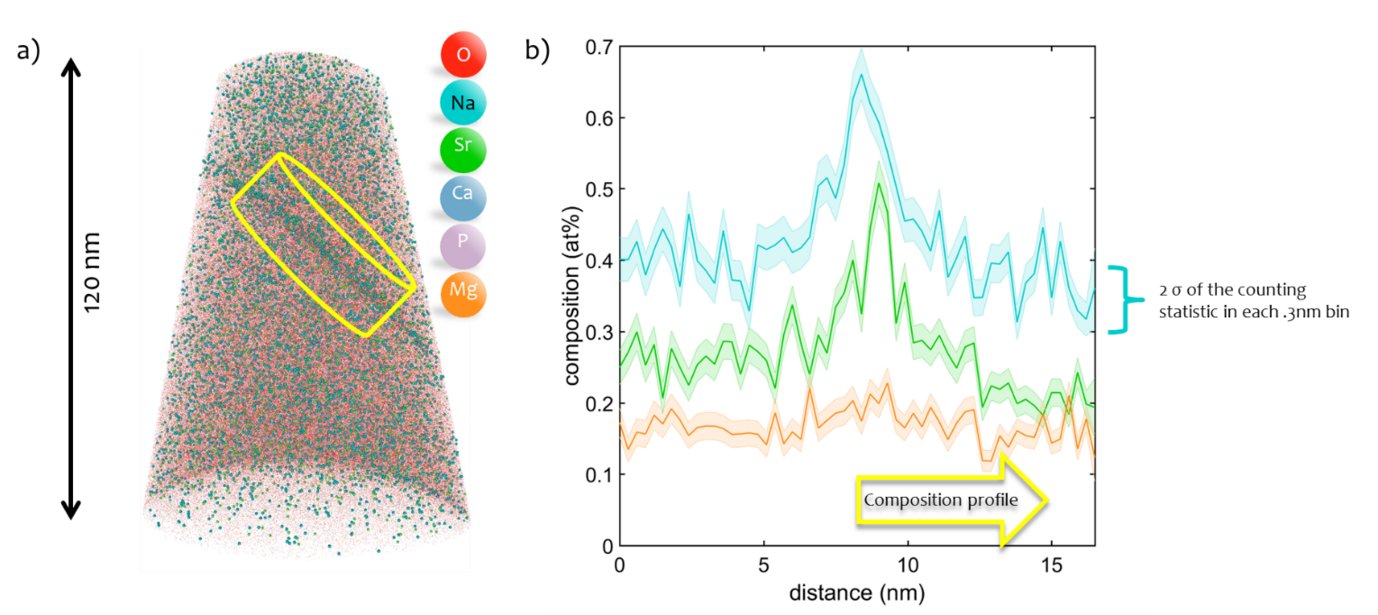Exploring possible applications of atom probe tomography in the biological sciences
Atom probe tomography (APT) is predominantly used to study non-biological materials, in an ion-by-ion tomographic process. At MPIE, we are a part of a small cohort of research labs exploring the use of APT for biologically-relevant materials. This field of research takes on two streams within our research group: the study of materials for implants including bioresorbable ceramics and bioresorbable metals, and the study of frozen liquids that can be used as carry-media for hydrated biological materials.
Bioresorbable materials
Bioresorbable materials are a class of synthetic materials that are attractive alternatives particularly for stents or bone fixations, due to their excellent biocompatibility and cell regenerative properties. To control cellular response to these foreign materials it is critical to understand the mechanical properties as well as the corrosion and degradation properties of the material. We are using APT to study local chemical distributions and the relationship between microstructural inhomogeneities and interfacing fluids. The results will guide the design of new biomaterials with tunable chemical composition and microstructures. Bioresorbable materials currently under active investigation include Mg- and Zn- based alloys, as well as commercially-relevant calcium phosphates.
Cryogenic enabled study of liquids using APT
Recent development in cryogenic specimen preparation and transfer have shown that frozen liquids can be studied using atom probe tomography. Current advancement in a cryogenic focused ion beam lift-out workflow has enabled increased consistency and throughput of liquid and liquid-solid interface atom probe specimens. Despite the ability to reproducibly produce solid liquid specimens, many analytical challenges lie ahead. The ability to derive structural information in the form of biomolecules or particles embedded in the liquid and/or solid-liquid interfaces require detailed studies.
A key goal of cryogenic enabled sample preparation for APT, is to be able to provide meaningful measurements of the structure and chemistry of biologically-active materials in their near-native, hydrated state. Such data will facilitate understanding of the molecular mechanisms underlying their evolution, metal impurity incorporation, and potentially map ways to control formation. Our ambition is to provide insights that will aid and guide future drug design. For example, enabling the 3D mapping of fibrils at near-atomic resolution, we can focus on restricting the integration of metals associated with Alzheimer disease. The developed protocols are suitable for a wide array of hydrated specimens, such as nano-particles, cell fragments, and proteins.


